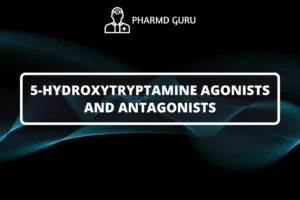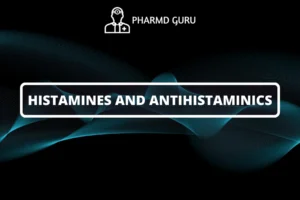Local anesthetics are commonly used in medical and dental procedures to provide temporary loss of sensation in a specific area of the body. These drugs play a crucial role in pain management and enable various procedures to be performed with minimal discomfort. In this article, we will explore the pharmacology of local anesthetics, their mechanisms of action, different types of local anesthetics, and considerations for their safe and effective use.
SCROLL DOWN TO THE BOTTOM OF THIS PAGE FOR ACTUAL NOTES.
TABLE OF CONTENTS:
- Introduction
- Mechanisms of Action
- Types of Local Anesthetics
- Pharmacokinetics
- Uses and Applications
- Considerations for Use
Introduction
Local anesthetics are medications that produce reversible loss of sensation in a localized area of the body. They work by blocking nerve conduction and preventing the transmission of pain signals from reaching the brain. This allows medical and dental procedures to be performed without causing significant discomfort to the patient.
Mechanisms of Action
Local anesthetics exert their effects by inhibiting the conduction of nerve impulses through the blockade of sodium channels. By binding to specific receptors on the inner portion of the sodium channels, they prevent the influx of sodium ions, which are essential for nerve impulse transmission. This blockade interrupts the transmission of pain signals and results in the temporary loss of sensation in the targeted area.
Types of Local Anesthetics
There are two main types of local anesthetics:
- Ester Local Anesthetics: Examples of ester local anesthetics include procaine and tetracaine. These drugs are metabolized by plasma esterases and have a relatively short duration of action.
- Amide Local Anesthetics: Lidocaine and bupivacaine are examples of amide local anesthetics. These drugs are metabolized by the liver and have a longer duration of action compared to ester local anesthetics.
Different local anesthetics have varying durations of action, onset times, and potencies. The choice of local anesthetic depends on the specific procedure and the patient’s individual needs.
Pharmacokinetics
Local anesthetics can be administered topically, through infiltration, nerve blocks, or epidural/spinal routes. They are typically administered as solutions or ointments directly to the target area. The absorption of local anesthetics into the bloodstream depends on factors such as the vascularity of the site and the presence of vasoconstrictors in the formulation.
Once in the bloodstream, local anesthetics are metabolized primarily in the liver and excreted by the kidneys. The rate of metabolism and elimination varies among different local anesthetics.
Uses and Applications
Local anesthetics are widely used in various medical and dental procedures, including:
- Dental Procedures: Local anesthetics are used during dental fillings, root canals, and tooth extractions to numb the area and prevent pain.
- Minor Surgical Procedures: They are employed in minor surgical procedures, such as skin biopsies, wart removal, and suturing, to provide local pain relief.
- Labor and Delivery: In certain situations, local anesthetics may be used during labor to provide pain relief through epidural administration.
- Diagnostic Procedures: Local anesthetics are utilized during diagnostic procedures, such as endoscopies and bronchoscopies, to minimize discomfort.
Considerations for Use
While local anesthetics are generally safe, there are some important considerations for their use:
- Allergy and Sensitivity: Patients with known allergies or sensitivities to local anesthetics or related substances should inform their healthcare providers.
- Dosage and Administration: Local anesthetics should be administered in appropriate doses and techniques to ensure effective pain relief while minimizing the risk of systemic toxicity.
- Potential Side Effects: Local anesthetics can cause temporary side effects such as numbness, tingling, swelling, and redness at the injection site. Rarely, systemic reactions or allergic responses may occur.
- Systemic Toxicity: Excessive doses or inadvertent intravascular injection of local anesthetics can lead to systemic toxicity, causing symptoms such as dizziness, confusion, seizures, and even cardiac arrest.
ACTUAL NOTES:




